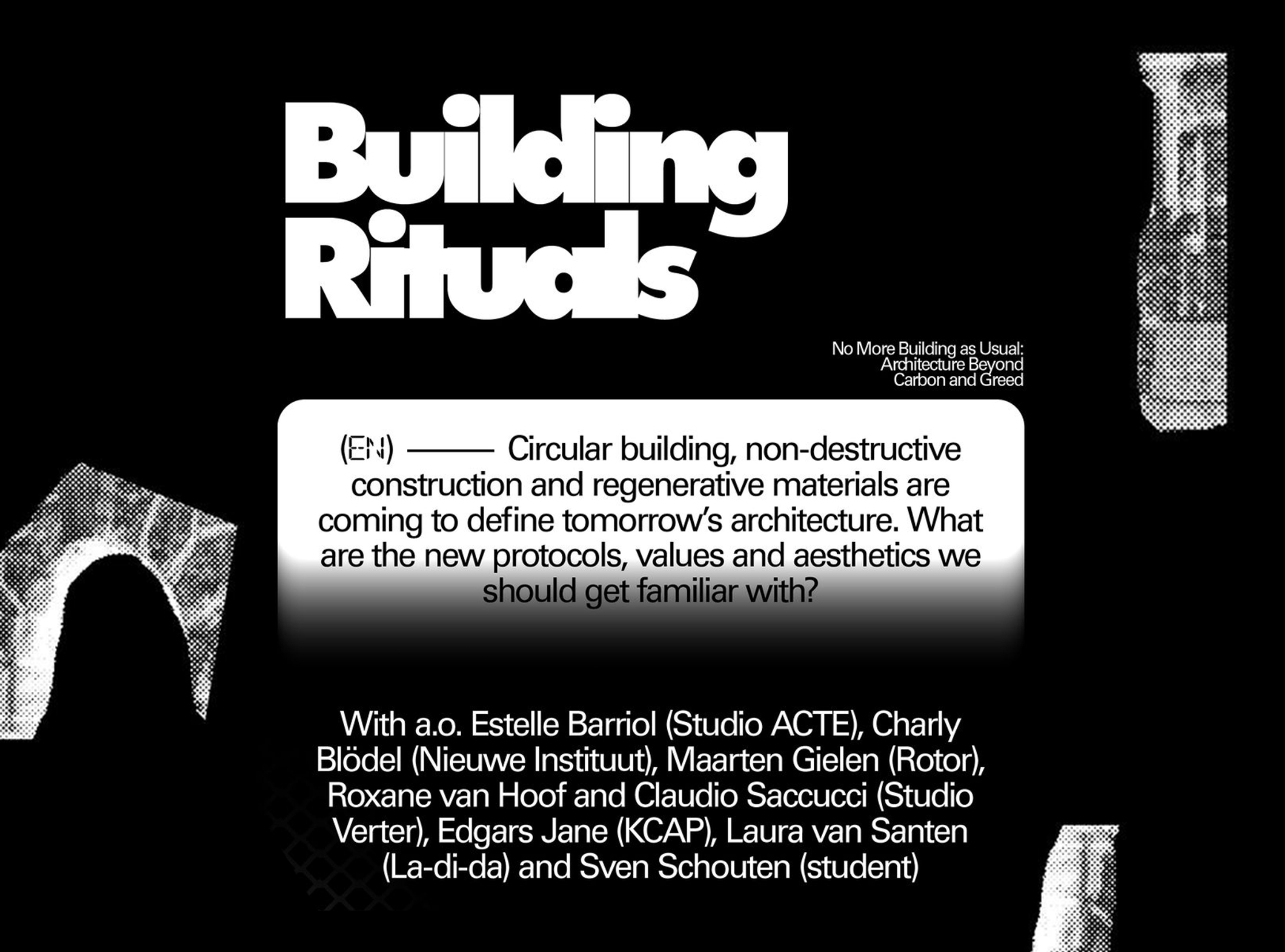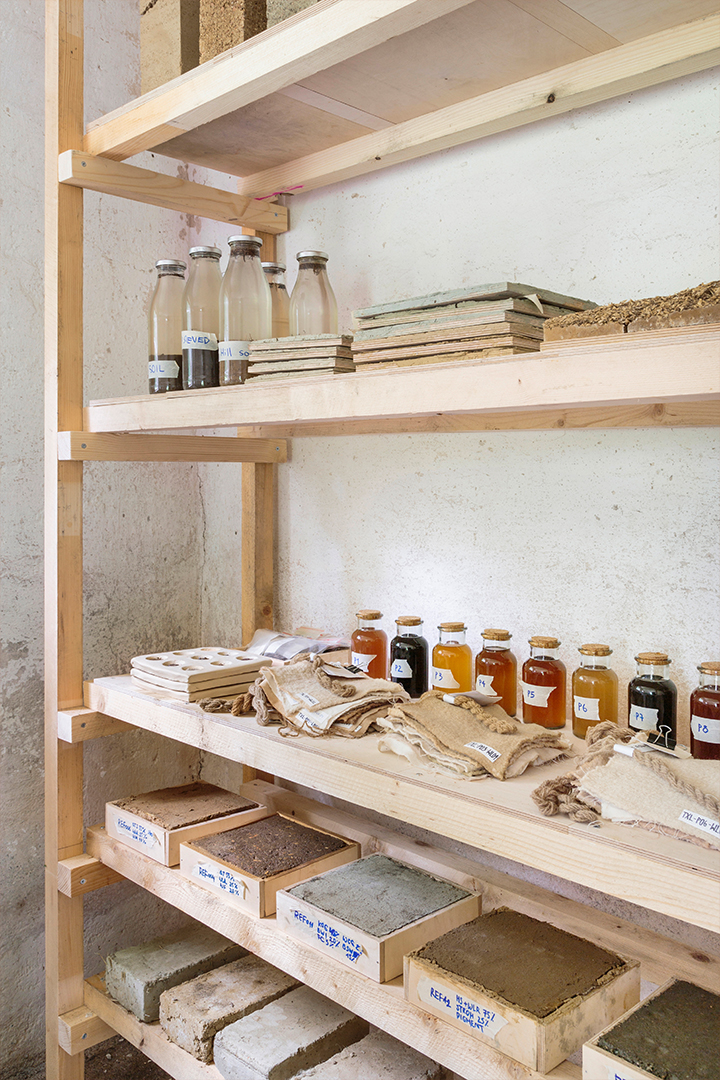Building with Waste Streams
During a 10-day workshop developed with Estelle Jullian (LINA fellow) and Thomas Amann (TU Vienna), the Architecture Master Students mapped local agricultural waste streams and industrial byproducts in natural stone quarries, construction waste recycling facilities and wood manufacturers. Through material tests and prototyping, the students developed new material recipes that apply these material streams in a local architectural material palette, from recipes for rammed earth walls, bricks, earthen floors to ceramic Glaces and textiles died with invasive plants.

The quarry of Kogler Naturstein offers a range of products from natural stone slabs and crushed stone in various sizes. When stone is crushed and machines are cleaned, a fine stone dust is filtered out of the cleaning water: A filter cake that the students made use of in rammed earth, brick and plaster mixtures.
How can we live – and create – on a damaged planet? If, as the philosopher Baptiste Morizot describes, the ecological crisis is also a crisis of sensitivity, how can we feel, understand and weave new relationships with respect to the territory and the matter of the objects that constitute our own daily life and the more-than-human life that surrounds us? As the architect tests the role of the mediator to help foster these connections, which tools, methodologies and (knowledge) collaborators are needed and which architectural possibilities spring from this framework?

From crushed brick to stone dust and invasive Japanese knotweed the students explore these materials not as agricultural and industrial waste streams but as possible material streams that can be valuable in the development of local architectural materials.
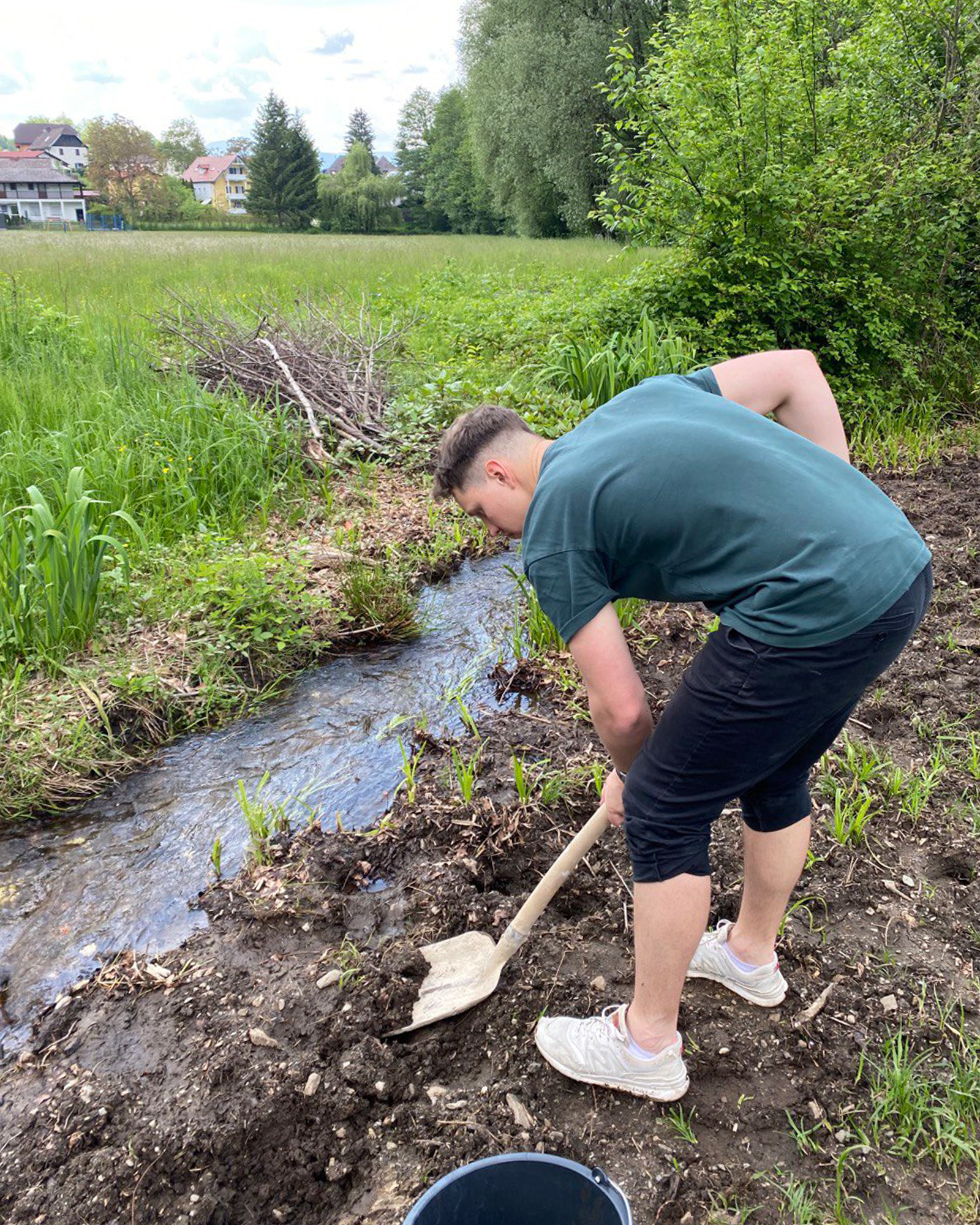
Different kinds of soil can be found on the Campus of the Vienna Boys’ Choir. Each location offers different properties in soils.

With a bottle test the students explore the properties of soils found on the territory of the Campus and waste soils from recycling sites.

The recipes reach from earthen walls and floors to ceramic glazes and died textiles.
The slowly deteriorating existing buildings and varied landscape of the Vienna Boys’ Choir campus offer a testing ground for radical strategies of adaptive reuse through local resources and material waste streams. The workshop explored the local landscape that is characterized by its partially natural and its partially industrial material and waste streams. The students mapped these local material streams directly on the territory and in regional proximity to Sekirn to trace the resources for our workshop.
Throughout excursions to different sites such as local natural stone quarries and construction waste recycling facilities, we collected the raw material for material testing and experimentations. The outcome of the workshop is a series of material samples that speculate on a local material palette. These samples point towards concrete directions for further development of selected materials and their application on the campus. The design and material research of this workshop is archived in the form of a library for local material recipes which will be housed at the pig sty of the campus for future use and further exploration.

Through frequent adjusting of ratios and testing of material properties, the students refine their final recipes.
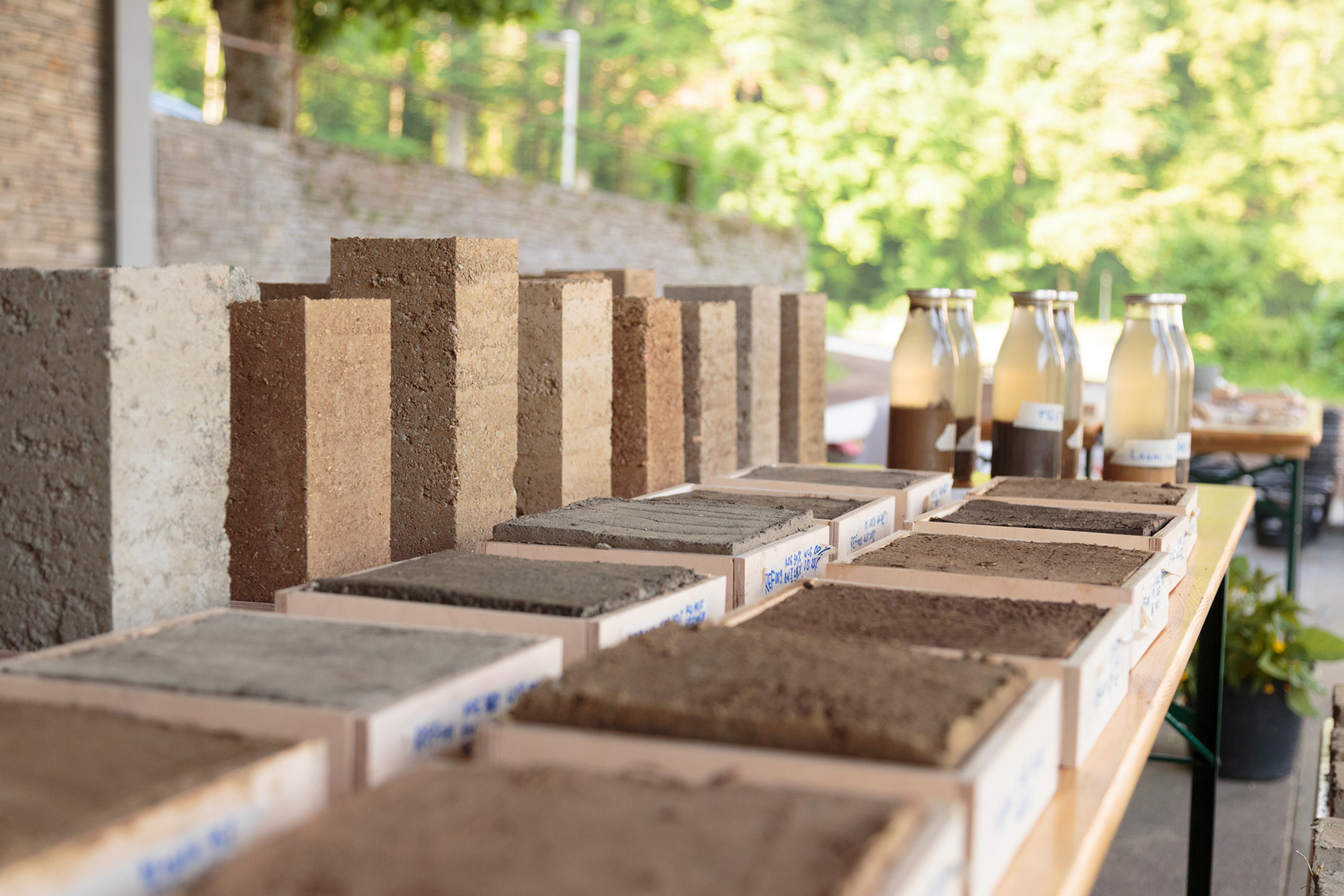
The result: a material library of industrial waste streams applied in a local architectural material palette.
The material library proposes a new material narrative to the existing territory in which the students of TU Vienna act as active agents in coping jointly with common challenges, facilitating collaboration and dialogic methodologies in order to generate and draw on new knowledge(s) and perspectives in the specific context of the renovation processes on the Vienna Boys’ Choir campus.
Students
Fanny Bruckbauer, Sophie Coqui, Valeriya Gridneva, Anton Ivanov, Ruth Köchl, Martin Kohlbauer, Roman Levoshka, Beverly Mori, Irina Mezheynikova, Nina Popic, Sara Rodiqi, Franziska Sorger, Emma Theis, Öykü Tok
Workshop Tutors
Charly Blödel, Estelle Jullian, Thomas Amann
Jury
Prof. Tina Gregorič Aljoša Dekleva, Volker Dienst, Tina Gregorič, Estelle Julian, Gaja Mežnarić Osole The design studio is part of the European Architecture Platform LINA (co-funded by the European Union).
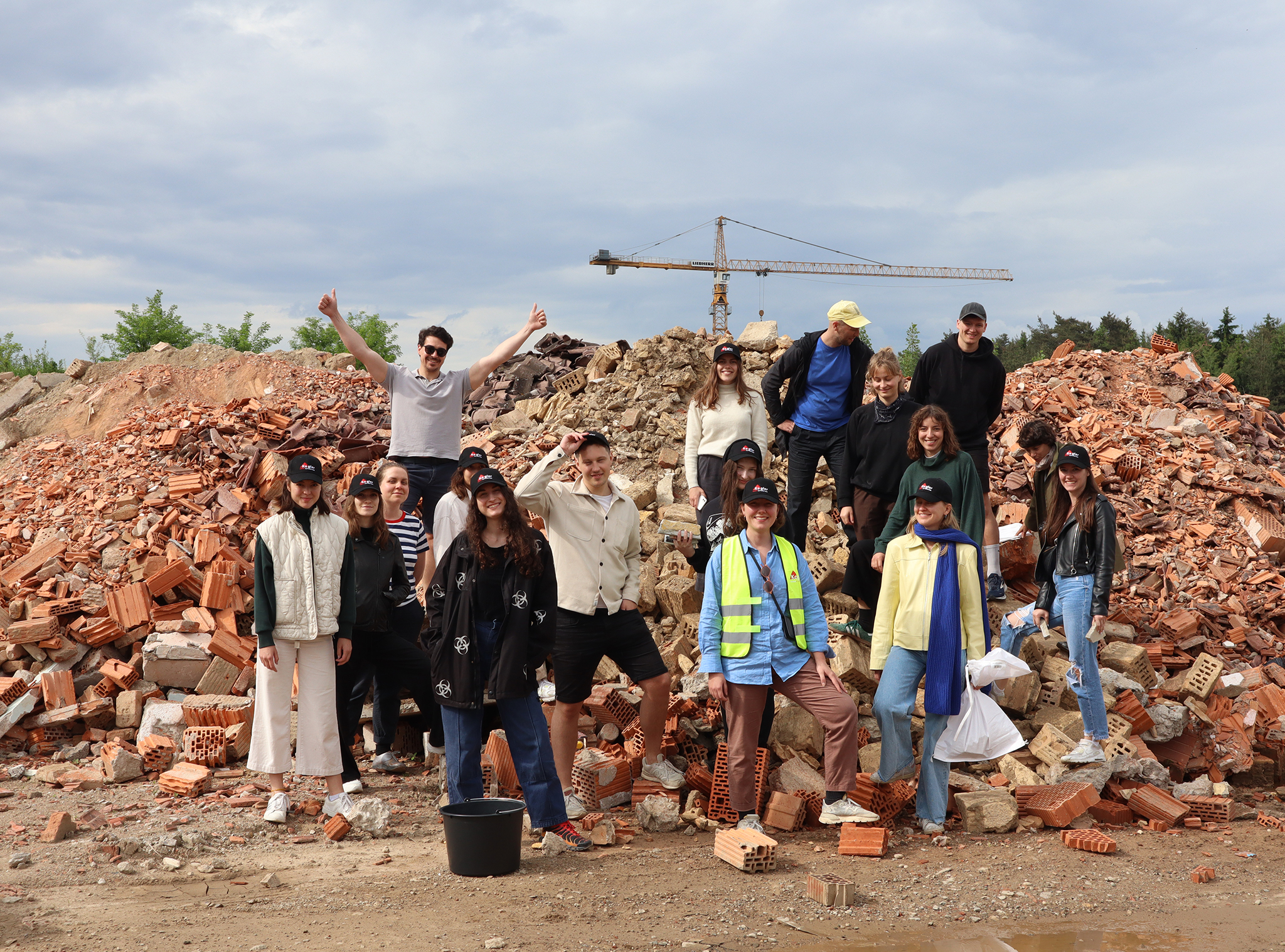
The students of the Institute of Architecture and Design, TU Vienna, with tutors Thomas Amann, Estelle Jullian and Charly Blödel during one of the excursions to GT Baustoff Recycling.
© Charly Blödel, 2022. For more Imprint.


